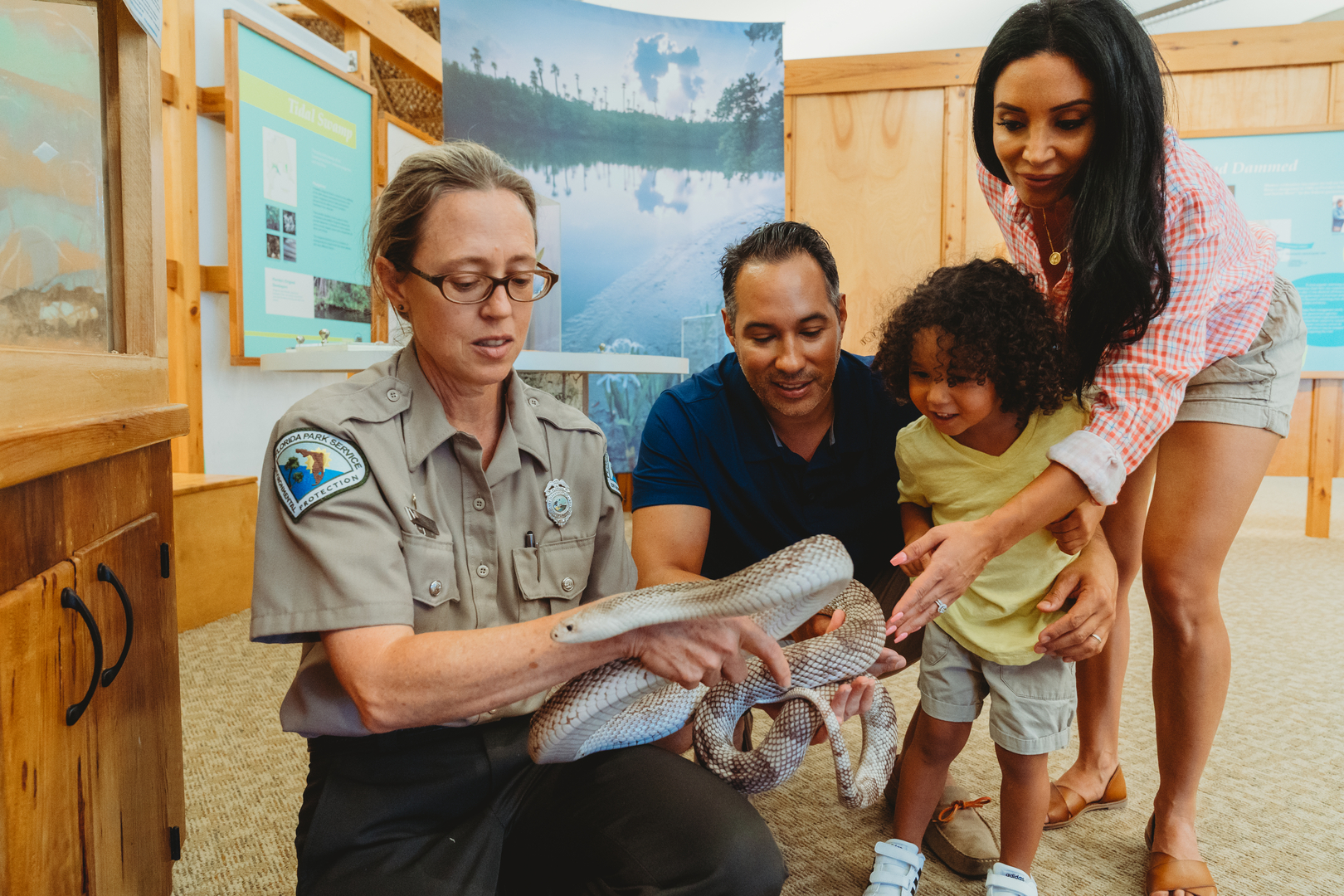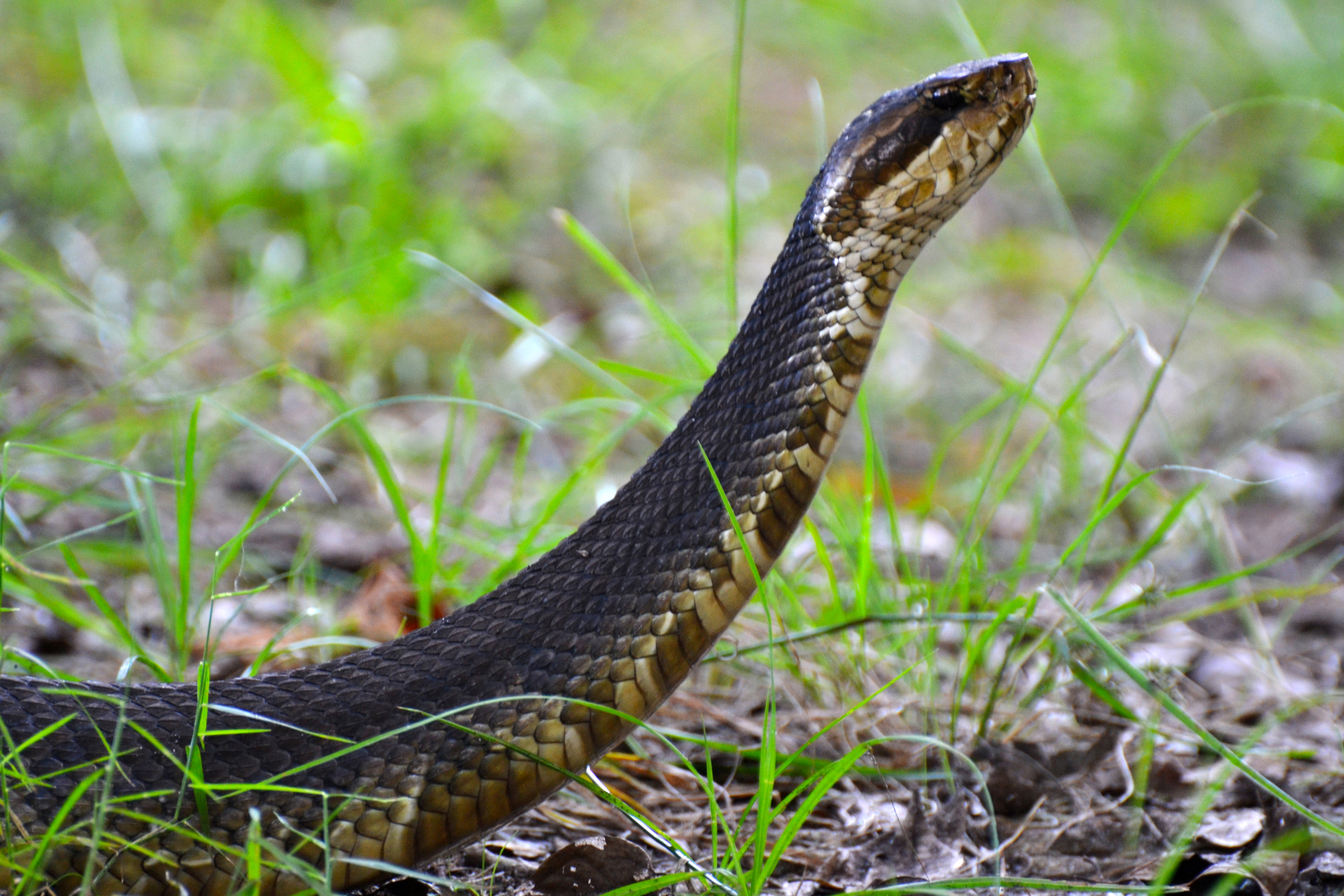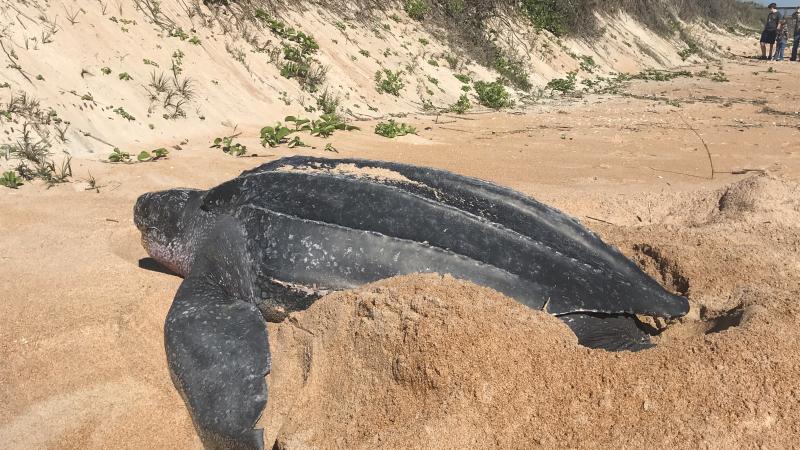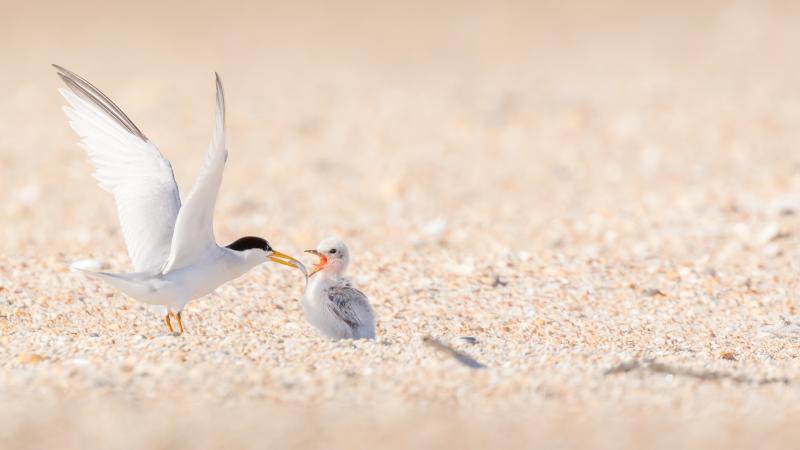
Why Don't Snakes Have Legs?

July 16 is World Snake Day, and Florida is a great place to celebrate. Why would anyone celebrate snakes?
Often thought to be ominous, snakes have an important role in the ecosystem and are not usually a danger to people. We talked to two Florida Park Service snake experts to learn more.
Andrea Junkunc teaches reptile education programs at Ellie Schiller Homosassa Springs Wildlife State Park. During Andrea’s programs, visitors have the chance to meet an ambassador snake. Often it’s their first time seeing a snake up-close. The most common snake myths she hears is that snakes like to chase people and that they’re slimy.
“The fear of snakes is a common phobia that can hinder many people from enjoying the outdoors,” Junkunc said. “Knowledge overcomes fear! In Florida there are close to 100 species and subspecies of snakes, but only six are venomous. And no snake wants a confrontation with anything 100 times its size.”
What about venomous snakes like the cottonmouth (also known as the water moccasin)?
“Even venomous snakes (don’t want confrontation),” Junkunc said. “It takes a venomous snake a long time to produce venom. If they don’t have it, they can’t eat. They can’t constrict their prey like many snakes can, so if they go biting everything, they have no way to catch food. They prefer to just slither away peacefully and use their venom to help fill their bellies later when a rat comes by.”


Tips for co-existing with snakes from the Florida Fish and Wildlife Conservation Commission
Park Biologist Keith Morin has been fascinated by snakes for years. Now he works at Paynes Prairie Preserve State Park near Gainesville, a vast wetland that is perfect habitat for species like the banded water snake.
How do snakes benefit Florida’s ecosystems?
“Snakes serve as both predator and prey, providing a vital energy and survival link for the food web and ecosystem,” Morin said. “They eat an endless variety of prey. Many of their prey can breed explosively and are considered pests. Snakes help balance these populations.”
What snakes would a visitor most likely to see in Florida State Parks or other natural areas?
“Snakes that move a lot are seen frequently, such as the black racer that has a wide patrolling style of hunting. Water snakes and garter snakes often come out of the marsh and onto trails to sun, so those are seen in wet areas," said Morin.
"One of the most common snakes in wooded areas seen climbing is the rat snake. This could be a yellow rat snake in Central Florida, a gray rat in North Florida or an Everglades rat in South Florida. These are all closely related despite their different appearances.”
If someone wants to see a snake, where should they look?
“Down! I know birding is very popular with our park visitors and birds are an incredible draw to our parks. Snakes mostly are in the opposite direction and can have camouflage coloration making them harder to see.”
And finally, why don’t snakes have legs?
“They don’t need them,” Morin said. “From the way they move, to the places they can go and some of the methods of subduing prey, like constriction, having legs would simply get in the way. Over millions of years they gradually lost legs, and they’ve even lost shoulders and hips. Evidence of older species with limbs can be found in the fossil record and in the boas (Boidae), a more primitive family that still has remnants of limbs.”


